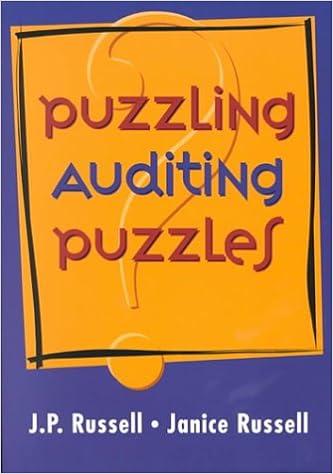Question
Return on Equity in Presence of Large Treasury Stock Balance NJ Simpson Inc. reported the following equity accounts in its 2017 balance sheet. Stock prices
Return on Equity in Presence of Large Treasury Stock Balance
NJ Simpson Inc. reported the following equity accounts in its 2017 balance sheet. Stock prices for the past three year-ends of 2017, 2016, and 2015 are: $244.80, $196.96, and $136.34, respectively.
| Shareholders Equity ($ millions, expect par and shares) | 2017 | 2016 | 2015 | ||||||
|---|---|---|---|---|---|---|---|---|---|
| Common stock par value $1 per share (authorized 70,000,000 shares; | |||||||||
| issued 40,000,000 shares) | $40 | $40 | $40 | ||||||
| Additional paid-in capital | 1,240 | 1,240 | 1,240 | ||||||
| Accumulated other comprehensive income | 108 | (96) | (220) | ||||||
| Retained earnings | 1,419 | 1,340 | 1,209 | ||||||
| Stockholders equity before treasury stock | 2,807 | 2,524 | 2,269 | ||||||
| Less: common stock held in treasury, at cost (15,360,000, 10,336,000, and | |||||||||
| 980,000 shares, respectively) | (2,776) | (1,844) | (114) | ||||||
| Total shareholders equity | 31 | 680 | 2,155 | ||||||
| Equity attributable to noncontrolling interest | (6) | (6) | (6) | ||||||
| Equity attributable to company shareholders | $25 | $674 | $2,149 |
The income statement for NJ Simpson Inc. reports the following.
| $ millions | 2017 | 2016 | 2015 | ||||||
|---|---|---|---|---|---|---|---|---|---|
| Earnings attributable to company shareholders | $403 | $301 | $217 | ||||||
| Consolidated net income | 409 | 303 | 218 |
a. Compute return on equity for 2017 and 2016, under the following assumptions.
Traditional definition of equity.
With adding back treasury stock to equity.
Using market value of equity instead of book value.
Round answers to one decimal place (ex: 0.2345 = 23.5%)
| ROE computation | 2017 | 2016 | ||
|---|---|---|---|---|
| Traditional | Answer % | Answer % | ||
| No treasury stock | Answer % | Answer % | ||
| Market value of equity | Answer % | Answer % |
b. Which of these metrics do we believe best measures the companys return for the past two years?
Select which statement is correct.
Traditional ROE is inflated by the small equity balance in the denominator. This version does not truly measure the companys performance.
ROE with no treasury stock is inflated by the small equity balance in the demoniator as it assumes the company could sell the treasury stock and add the cash to assets.
ROE using market value potentially overstates current period performance because the ratio includes the companys high stock price, which by definition impounds future earnings.
All of these statements are correct.
Step by Step Solution
There are 3 Steps involved in it
Step: 1

Get Instant Access to Expert-Tailored Solutions
See step-by-step solutions with expert insights and AI powered tools for academic success
Step: 2

Step: 3

Ace Your Homework with AI
Get the answers you need in no time with our AI-driven, step-by-step assistance
Get Started


